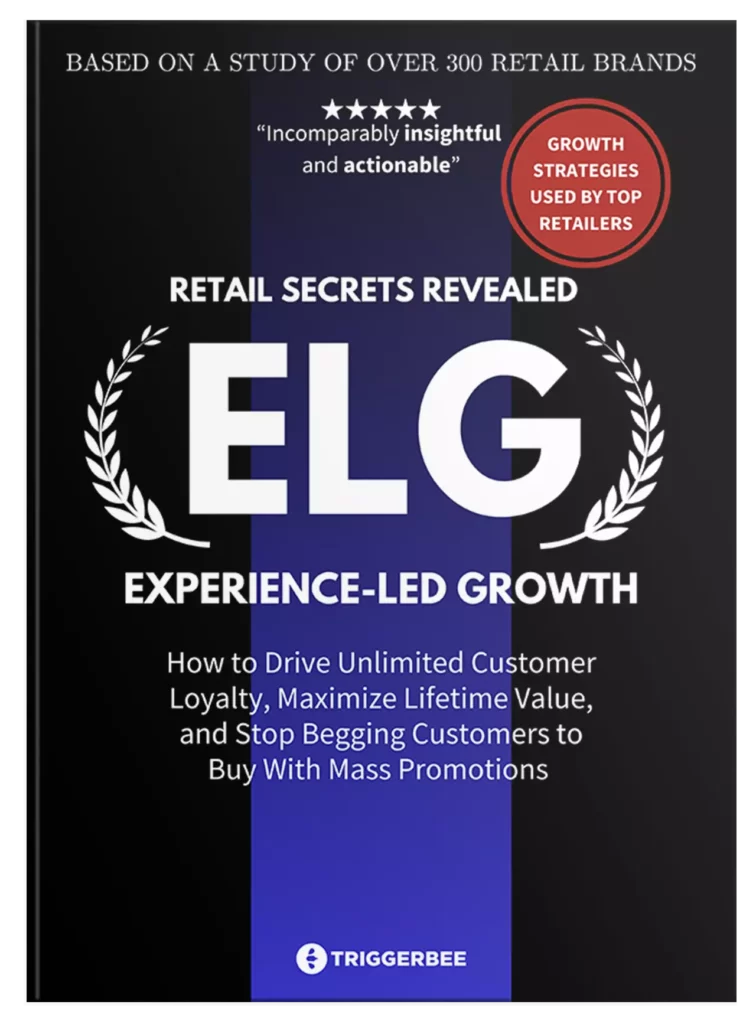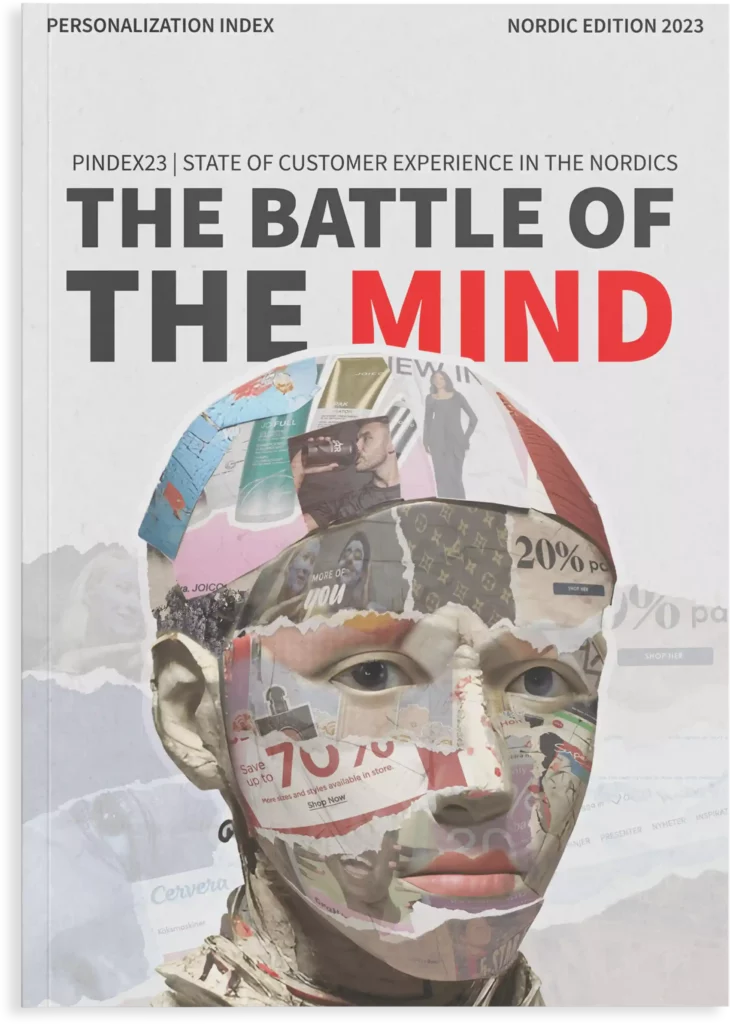What is it?
Customer experience (CX) is the overall perception and feeling a customer has as a result of interactions with a brand’s products, services, and marketing efforts at every touchpoint. It encompasses the entire customer journey, from initial contact to post-purchase support, shaping how customers view and engage with a brand. A good customer experience strategy can help you:
- improve customer satisfaction by 10-20%
- boost sales conversions by 10-15%
- make you less dependent on ads
- and let you take full control of your growth.
A huge part of the customer experience (at least the digitally) is having a very user friendly website that encourages its users to… use it. If your customers can glance at your website and know exactly where to click to find what they’re looking for, you’ve won half of the battle. Simplicity always wins. Think of it this way: You’re not just selling products; you’re delivering a feeling that makes people want to come back. One interaction at a time. Do it right and sales will naturally follow.
Why is having a good customer experience important?
Having a good customer experience is important because it will help you differentiate your brand in a very crowded marketplace. Look: most online brands are trying to catch the same fish as everyone else. The standard e-commerce playbook is made up of email- and influencer marketing, affiliate programs, and Facebook, Instagram, and Google ads.
In the current market, you win by using your data better than your competition. There are more loyalty programs than ever, and consumers have more choices than ever. Having a good customer experience strategy means that you’re adapting to these changes.
- Differentiation in a crowded market: In today’s competitive landscape, exceptional customer experience sets a brand apart from its competitors. By focusing on CX, brands can build stronger relationships with customers, encouraging loyalty and repeat business.
- Increased customer satisfaction: A positive customer experience leads to higher satisfaction rates. Satisfied customers are more likely to leave positive reviews, recommend the brand to others, and become repeat buyers.
- Higher conversion rates: Optimizing the customer experience can directly impact conversion rates. When customers find interactions with a brand enjoyable, they are more likely to complete purchases and come back for more.
- Enhanced customer loyalty: Consistently delivering a great customer experience builds trust and loyalty. Loyal customers not only provide repeat business but also refer their friends.
The role of personalization in the customer experience
Personalization is one of the most effective ways to enhance the customer experience. In our experience personalization is best used when it:
- increases the clarity of an interaction
- decreases friction and confusion
- reduces anxiety
- minimizes distractions
Take a look at Amazon’s homepage.

Amazon has five personalized sections of their homepage:
- They display the name of the account owner (right of search bar)
- Delivery address (left of search bar)
- Felix’s Amazon (in the sub-navigation menu)
- “Keep shopping for” where they showcase my latest visited products.
- “Buy again” where they show my last 4 purchases.
Amazon is a marketplace, which means you buy products from third-party sellers and not directly from Amazon. Imagine if I experienced issues with the thermometer shown in my “Buy again”-section. The first place I’d look is in a cabinet to see if I still have the box it came in.
But I’m the kind of person who throws boxes away immediately. So I would go to Amazon and navigate to the product page…

Luckily for me, Amazon have personalized product pages with notifications on the products. Not only do they tell me the purchase date, but I can review it AND get product support.
This is an incredibly simple but powerful way of using personalization strategically.
In other words, personalization is MUCH MORE than simply adding product recommendations and tailoring on-page search results. It’s about using the data you have about your customers to give them what they need, at the time they need it.

The second reason why personalization is important is because the apps we use on a daily basis are setting the bar for digital expectations. TikTok, Netflix, Instagram, Spotify, Google, Youtube, Linkedin. Everything is personalized to you and your interests.
Your customers’ are already comparing the simplicity and accessibility on your site to the services and other brands they interact with. Personalization makes every interaction less confusing and relevant which should be the main purpose of any personalization.
If you want to learn more about personalization, we’ve compiled an insightful list of 29 unique personalization examples ranging from how to use customer data to improve your customer experiences, to using specific tools like exit-intent popups for cart recovery.
Customer experience best practices
Understand your customers
Getting to know your customers is the first and most important step to creating a great customer experience. Use onsite surveys to conduct thorough audience research and understand your customers’ needs, preferences, and pain points. Use CSAT surveys, NPS surveys, feedback forms, and analytics to gather data. This insight will help you tailor your offerings and interactions to meet your customers expectations.
Personalize interactions
Use customer data to personalize interactions at every touchpoint. Personalization can include customized product recommendations, personalized emails, and tailored marketing messages. Tools like Triggerbee can help track and use customer behavior to enhance personalization.
Streamline the customer journey
Ensure that the customer journey is smooth and intuitive. Simplify navigation on your website, offer quick and easy checkout processes, and provide clear and concise information. Remove any obstacles that could cause frustration or confusion.
Offer excellent customer support
Provide multiple channels for customer support, including live chat, email, and phone support. Train your support team to be responsive, knowledgeable, and empathetic. Quick and effective resolution of issues enhances the overall customer experience.
Collect and act on feedback
Regularly collect feedback from customers to identify areas for improvement. Use tools like CSAT and NPS surveys to gauge customer satisfaction. Act on the feedback to make necessary changes and show customers that their opinions are valued. If you want to see a real-life example of how to do this, check out how Swedish home decor brand Cervera used a CSAT survey to improve their customer experience.
FAQ
How can I measure customer experience?
Common metrics to measure customer experience include Customer Satisfaction Score (CSAT), Net Promoter Score (NPS), and Customer Effort Score (CES). These metrics provide insights into customer satisfaction, loyalty, and the ease of interactions with your brand.
What role does personalization play in customer experience?
Personalization is crucial for enhancing customer experience. It involves tailoring interactions based on individual customer data, making the experience more relevant and engaging. Personalized experiences can lead to higher satisfaction, loyalty, and conversion rates.
How can Triggerbee help improve customer experience?
Triggerbee provides tools for tracking customer behavior, collecting feedback, and personalizing interactions. By leveraging these capabilities, you can gain deeper insights into customer preferences and deliver a more tailored and seamless experience across all touchpoints.
What’s the difference between user experience vs. customer experience?
User experience is how people interact with your digital platforms. UX is focused on informational hierarchy, visual hierarchy, and design elements. Your user experience (UX) is an important part of the overall customer experience (CX). But the UX is a specific part focused on how the customer experience is delivered. Customer experience refers to all of the interactions in the customer journey and is about the perception of your brand across all touchpoints.
What’s the difference between customer satisfaction vs. customer experience
Customer satisfaction is a momentary measure of your customers happiness, and is measured with a CSAT survey. CSAT stands for Customer Satisfaction Score, and it’s a survey that usually contains a simple question with a response on a scale of 1-5. The standard CSAT survey question is: “How satisfied are you with your shopping experience?” If you want to know more about measuring your customer satisfaction, read this blog post about CSAT surveys.

